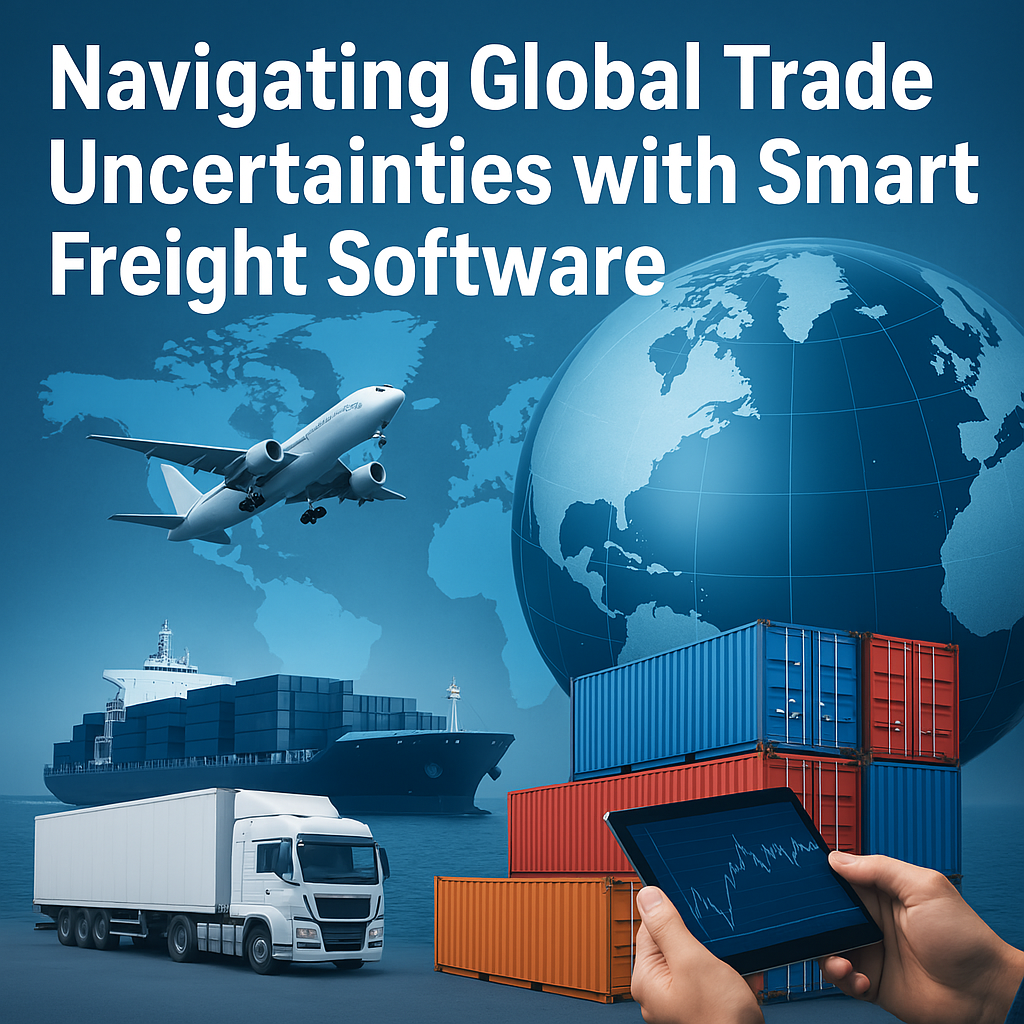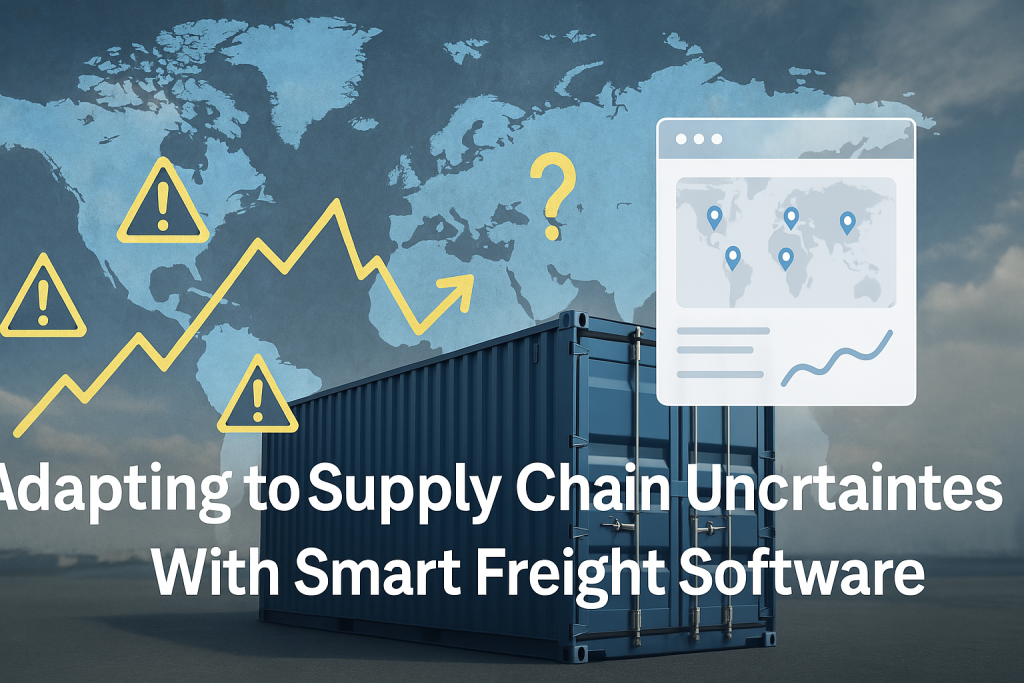Navigating Global Trade Uncertainties with Smart Freight Software
The question is no longer if challenges will arise — but how quickly can you respond?

⚠️ Key Global Trade Challenges in 2025
1. Geopolitical Instability
- Regional conflicts, sanctions, and trade route closures have disrupted traditional shipping lanes.
- Export controls and shifting diplomatic ties complicate customs processes and cross-border compliance.
2. Economic Volatility
- Currency fluctuations, inflation, and recessionary pressures impact demand, freight rates, and supplier reliability.
- Cost unpredictability makes quoting and margin protection difficult.
3. Climate-Related Disruptions
- More frequent hurricanes, wildfires, and floods are interrupting port operations and inland transit.
- Seasonal volatility requires more dynamic planning than ever before.
4. Regulatory Complexity
- Regulations such as CTPAT, GDPR, and emissions-based compliance (like IMO 2023) demand digital documentation, traceability, and precise reporting.
- Governments are increasingly enforcing carbon tracking and secure trade protocols.
5. Port Congestion & Carrier Reliability
- Ongoing backlogs at key ports in the U.S., China, and Europe slow down global supply chains.
- Equipment shortages and vessel delays require constant re-routing and contingency planning.

🚀 The Role of Smart Freight Software in Tackling These Challenges
Amid this uncertainty, smart freight forwarding platforms are giving logistics professionals the visibility, flexibility, and automation they need to thrive.
✅ 1. Real-Time Visibility
Track shipments across borders with GPS, EDI, and IoT integrations — reducing surprises and allowing proactive customer updates.
✅ 2. Dynamic Route Planning
Reroute around delays or closed ports instantly based on real-time data, weather alerts, or geopolitical events.
✅ 3. Automated Documentation & Compliance
Generate and store customs paperwork, certificates, and trade documents digitally — reducing errors and audit risks.
✅ 4. Rate Management & Cost Control
Compare rates across carriers, forecast costs based on demand trends, and identify profitable routes.
✅ 5. Integrated Communication
Centralize chats, alerts, and updates between clients, carriers, and internal teams — even across time zones.

🔍 Why Agility Matters More Than Ever
In 2025, freight forwarders don’t just need efficiency — they need agility.
That means:
- Quickly adapting to route changes
- Communicating updates instantly
- Scaling up or down as demand fluctuates
- Making decisions with real-time data
📦 Smart freight software turns disruption into opportunity — letting forwarders shift from firefighting mode to strategic logistics leadership.

📈 Conclusion: Future-Ready Freight Starts with Smart Tools
The Global trade challenges 2025 environment isn’t going to slow down — it’s going to grow more complex. But with the right digital foundation, freight forwarders can respond with speed, precision, and confidence.
Whether you’re managing disruptions, optimizing routes, or staying compliant across continents, smart freight software helps you navigate global uncertainty with clarity.
🌐 In an unpredictable world, digital agility is your strongest asset.
